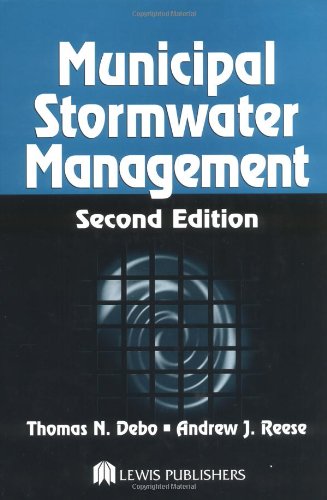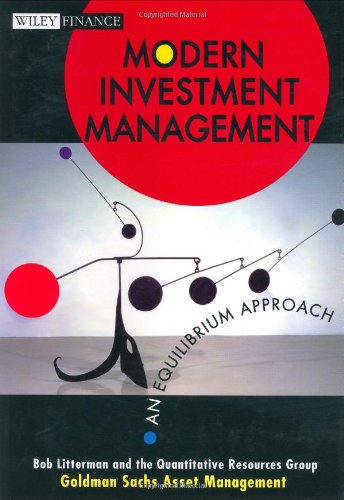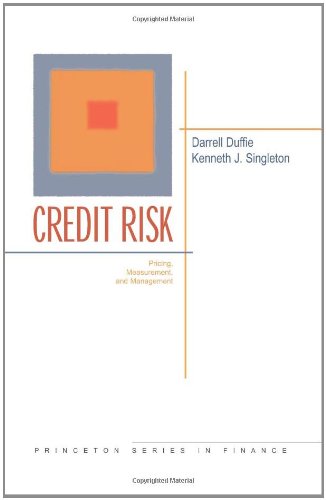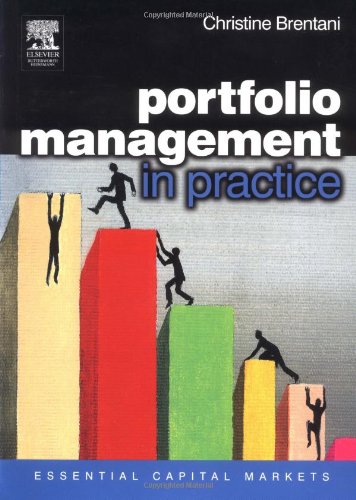Thomas N. Debo, Andrew Reese1566705843, 9781566705844
Table of contents :
Municipal Stormwater Management Second Edition……Page 1
Preface……Page 3
Authors……Page 4
Contents……Page 5
Paradigm #1 – Run It In Ditches……Page 27
Paradigm #3 – Run It In Stormwater Pipes……Page 28
Paradigm #4 – Keep It From Stormwater Pipes……Page 29
Paradigm #5 – Well, Just Do Not Cause Flooding……Page 30
The New Breed of Stormwater Paradigms……Page 31
Paradigm #7 – It Is The Ecology……Page 32
Paradigm #8 – Water Is Water Is Watershed……Page 33
From Paradigm To Paradigm……Page 35
1.2 Understanding Stormwater Management Problems and Solutions……Page 37
1.3 The Organization of the Rest of the Book……Page 41
References……Page 42
2.1 The Stormwater Management Program……Page 44
Long-Range Aspects……Page 45
Day-to-Day Stormwater Management……Page 46
2.3 Overview of the Legal Aspects of Stormwater Management……Page 47
Technical Manuals……Page 48
Computer Models……Page 49
Databases and Infrastructure Inventories……Page 50
GIS Systems……Page 56
Query and Analysis……Page 57
Data Display, Output, and Visualization……Page 58
Remote Sensing……Page 61
Light Detection and Ranging (LIDAR)……Page 62
2.5 Overview of the Organizational Aspects of Stormwater Management……Page 63
2.6 Overview of the Financial Aspects of Stormwater Management……Page 65
Long-Term Problem Areas……Page 67
Legal/Financial/Organizational/Technical Underpinning Problem Areas……Page 68
Charlotte, North Carolina……Page 69
Louisville MSD, Kentucky……Page 72
Tulsa, Oklahoma……Page 74
Basin-Wide Planning and Control……Page 77
Comprehensive Maintenance……Page 78
2.10 The Stormwater Program Feasibility Study……Page 79
2.11 Floodplain Management……Page 80
Flood Insurance Programs……Page 82
Reference……Page 84
3.2 Defining the “Public”……Page 85
8. Estimate costs and level of effort required for each phase of the program…….Page 87
3.4 Public Involvement and Education Techniques……Page 89
Public Participatory Groups……Page 90
3.5 The Stormwater Advisory Committee……Page 92
Defining the Group……Page 93
Media and the General Public……Page 94
Defining the Issues……Page 95
Informed Consent and Consensus Building……Page 96
Policy Papers……Page 97
3.6 Volunteer Programs……Page 99
3.7 Dealing with the Media……Page 100
3.8 Risk Communications……Page 102
3.9 Technical Communications……Page 105
References……Page 106
4.1 Introduction……Page 107
Table of Contents……Page 0
Riparian Doctrine……Page 108
Common Enemy Doctrine……Page 109
Municipal Liability……Page 110
“Takings”……Page 111
Legal Authority and Context……Page 112
Special Water-Quality Considerations……Page 113
Detention……Page 114
Identify Problems and Issues……Page 115
Formulation of Objectives……Page 116
Developing Policies……Page 118
Detention Analysis Example……Page 119
Drafting the Ordinance……Page 121
Stormwater Management Design Manual……Page 123
Rigid Ordinance Provision……Page 124
4.6 When to Adopt an Ordinance……Page 126
Municipal Role in Encouraging Innovative Solutions……Page 128
Field Inspection……Page 129
Enforcement……Page 130
4.8 Documentation……Page 131
Purpose of Documentation……Page 132
Design……Page 133
Documenting the Plan Development Process……Page 134
Documentation Procedures……Page 135
Hydrology……Page 136
Culverts……Page 137
Storage Facilities and BMPs……Page 138
4.9 Documentation for Legal Proceedings……Page 139
References……Page 141
5.1 Financing Needs of Stormwater Management Programs……Page 142
5.2 Major Stormwater Funding Methods……Page 143
Advantages of the Utility Concept……Page 144
Uniqueness Factor……Page 147
5.4 Utility Funding Methods……Page 148
General Policy Information……Page 152
Stormwater Credits……Page 154
Overview……Page 155
The Program Track……Page 156
The Public Track……Page 157
The Data Track……Page 161
Feasibility Studies……Page 162
Purpose……Page 163
Deliverables……Page 164
Task 4 – Projected Stormwater Program……Page 165
Task 6 – Service Charge Billing, Collection, and Accounting Options……Page 166
Task 8 – Action Plan Report……Page 167
References……Page 168
Purpose of Questionnaire……Page 171
Please Provide Your Answers on A Separate Sheet Keyed to Question Numbers Here……Page 172
Data Collection Effort……Page 176
6.2 Sources and Types of Data……Page 177
Contributing Size……Page 178
Slopes……Page 180
Watershed Land Use……Page 181
Stream Profile……Page 182
Debris and Ice……Page 183
Remote Data Acquisition……Page 184
Geographical Information Systems……Page 185
Telemetry……Page 186
Field Reviews……Page 187
Data Accuracy……Page 188
Sensitivity Studies……Page 189
Time Series Analysis……Page 190
Other Statistical Methods……Page 191
Overview……Page 192
Factors Influencing Data Collection……Page 193
Precipitation Data Acquisition……Page 194
Radar Precipitation Data Acquisition……Page 195
Rain Gauging Networks……Page 196
Rainfall Average Depth Estimation……Page 197
Basic Equipment and Techniques Overview……Page 199
Selection of Gauging-Station Sites……Page 203
Velocity Measurements……Page 204
Velocity Meters……Page 206
6.10 Environmental Data Considerations and Collection……Page 207
Environmental Sampling Objectives……Page 208
Key Constituents……Page 210
Nutrients……Page 211
Human Pathogens……Page 212
Sediment……Page 213
Atmospheric Fallout……Page 214
Other Human Activities……Page 215
Impacts on Receiving Waters……Page 216
Land-Use Baseline Data……Page 217
Urban Runoff Quality Data Collection……Page 219
Sample Types……Page 221
References……Page 222
Principle Site Data Sources……Page 226
Principle Environmental Data Sources……Page 227
Other Data Sources……Page 228
Appendix B – Field Investigation Form and Checklist……Page 229
7.1 Introduction……Page 232
7.2 Concept Definitions……Page 233
Drainage Basin Characteristics……Page 234
Meteorological Characteristics……Page 235
Risk……Page 236
Risk-Based Analysis……Page 237
Design Frequency……Page 238
Cross Drainage……Page 239
Detention and Retention Storage Facilities……Page 240
7.5 Hydrologic Procedure Selection……Page 241
Analysis of Stream Gauge Data……Page 242
Regression Equations……Page 243
Synder’s Unit Hydrograph……Page 244
Summary……Page 245
7.6 Calibration……Page 246
7.7 Precipitation and Losses……Page 247
Intensity-Duration-Frequency Curves……Page 248
Duration……Page 249
The “Balanced-Storm Approach”……Page 250
SCS 24-Hour Storm……Page 251
Huff Distributions……Page 252
Yen and Chow’s Method……Page 255
Rational Formula……Page 257
Characteristics and Limits of the Rational Method……Page 258
Time of Concentration……Page 260
Drainage Area……Page 262
Runoff Coefficient……Page 263
Example Problem – Rational Method……Page 266
7.9 SCS Hydrologic Methods……Page 267
Rainfall-Runoff Equation……Page 268
Curve Number……Page 270
Unconnected Impervious Areas……Page 272
Calculation of Lag Time and Time of Concentration……Page 274
Travel Time and Time of Concentration Empirical Equation……Page 279
Travel Time and Time of Concentration – Manning’s Equation……Page 281
SCS Peak Discharges……Page 284
Limitations……Page 285
SCS Peak Discharge Example……Page 288
Rainfall Excess Using SCS Methods……Page 290
Rainfall Excess Example……Page 291
SCS Dimensionless Unit Hydrographs……Page 293
Dimensionless Unit Hydrograph Discussion……Page 295
Unit Hydrograph Example……Page 298
7.10 Santa Barbara Urban Hydrograph Method……Page 300
Output Table – 24-hour Storm (Table 7-31)……Page 301
Output Table – 24-Hour Storm……Page 303
Water-Quality Volume Peak Flow Calculation……Page 305
Basic Approach……Page 307
Runoff (Ro)……Page 311
Infiltration (I)……Page 312
Evaporation (E)……Page 313
Evapotranspiration (Et)……Page 314
Overflow (Of)……Page 315
7.14 Downstream Hydrologic Assessment……Page 316
Increased Volume……Page 317
The Ten-Percent Rule……Page 318
References……Page 320
8.2 Concept Definitions……Page 323
Design Steps……Page 324
Design Factors……Page 325
Longitudinal Slope……Page 326
Roadside and Median Channels……Page 327
Shoulder Gutters……Page 328
Costs……Page 329
8.4 Stormwater Inlet Overview……Page 330
8.5 Design Frequency and Spread……Page 331
Uniform Cross Section……Page 332
Composite Gutter Sections……Page 334
8.7 Grate Inlet Design……Page 338
Grate Inlets on Grade……Page 339
Grate Inlet in Sag……Page 342
Curb Inlets on Grade……Page 344
Curb Inlets in Sump……Page 348
8.9 Combination Inlets……Page 351
Entrance Losses……Page 352
Junction Losses – Several Entering Flows……Page 353
8.11 Storm Drains……Page 354
Formulas for Gravity and Pressure Flow……Page 357
Hydraulic Grade Line……Page 361
Hydraulic Grade Line Design Procedure……Page 362
Roadway Pollution……Page 365
Structural Roadway BMP Design Overview……Page 368
References……Page 369
Appendix A – Metric Design Figures……Page 371
9.1 Introduction……Page 385
9.2 Concept Definitions……Page 386
Determine and Analyze Site Characteristics……Page 387
Design Side- and Slope-Tapered Inlets (Optional)……Page 388
Engineering and Technical Design Criteria……Page 389
Velocity Limitations……Page 390
Headwater Limitations……Page 391
Tailwater Conditions……Page 392
Improved Inlets……Page 393
Commercial End Sections……Page 394
Material Selection……Page 395
Culvert Sizes and Shapes……Page 396
Weep Holes……Page 398
Safety Considerations……Page 399
Critical Depth – Outlet Control……Page 400
Tailwater Depth > Barrel Depth – Outlet Control……Page 401
9.5 Design Procedures……Page 402
Use of Inlet- and Outlet-Control Nomographs……Page 403
Input Data……Page 408
9.7 Long-Span Culvert……Page 410
9.8 Design of Improved Inlets……Page 411
Bevel-Edged Inlet……Page 412
Improved Inlet Performance……Page 413
Design Figure Limits……Page 414
9.10 Flood Routing and Culvert Design……Page 415
Design Procedure……Page 416
References……Page 417
Appendix A……Page 419
Appendix B……Page 479
Channel Types……Page 538
Rigid Linings……Page 539
General Design Criteria……Page 540
10.3 Hydraulic Terms and Equations……Page 541
Kinetic Energy Coefficient……Page 542
Critical Flow……Page 543
Manning’s Equation……Page 544
10.4 ManningÌs n Values……Page 545
10.5 Manning’s n Handbook……Page 547
10.6 Best Hydraulic Section……Page 550
10.7 Uniform Flow Calculations……Page 551
General Solution Nomograph……Page 552
Trial- and- Error Solution……Page 555
Average Roughness……Page 556
10.8 Critical- Flow Calculations……Page 557
Design Stability……Page 559
Erosion Control……Page 562
100- Year Flood Elevation……Page 563
10.11Uniform Flow Û Example Problems……Page 564
Grassed Channel Design Stability ( Example 2)……Page 565
Grassed Channel Design Capacity ( Example 3)……Page 566
10.12 Gradually Varied Flow……Page 567
Direct Step Method……Page 568
Standard Step Method……Page 569
Direct Step Method……Page 571
Standard Step Method……Page 573
10.14 Hydraulic Jump……Page 575
Riprap Design……Page 577
Gabions and Rock Mattresses……Page 581
Soil Cement……Page 584
Bioengineering……Page 586
Overview……Page 587
Channel Response to Change……Page 588
Proportionality Approaches……Page 589
Assessing Stream Stability……Page 590
Stable Channel Design Approaches……Page 591
Maximum Permissible Velocity Method……Page 592
Tractive Stress Method……Page 595
Regime Equations for Channel Proportions……Page 597
Gravel Bed Equations……Page 598
Neill Method……Page 599
Tractive Stress Design Example……Page 604
Grade Control Structures……Page 606
Drop Structures, Chutes, and Flumes……Page 607
Instream Mitigation Features……Page 608
Riprap and the Environment……Page 613
Greenway Planning……Page 615
Preserve and Protect Aquatic Resources……Page 617
Use a Reference Site……Page 618
Restoration Practices……Page 619
Stream Health Assessment……Page 621
References……Page 622
11.2 Uses and Types of Storage Facilities……Page 627
Uses of Storage Facilities……Page 628
Types of Storage Facilities……Page 629
11.3 Design Criteria……Page 631
General Design Criteria……Page 632
Location Design Criteria……Page 633
11.4 Safe Dams Act……Page 634
11.5 General Design Procedure for Storage Routing……Page 635
Stage-Storage Curve……Page 636
General Procedure……Page 637
11.6 Outlet Hydraulics……Page 638
Perforated Risers……Page 639
Two-Way Drop Inlets……Page 641
Submerged Weir Correction……Page 644
Sharp-Crested Rectangular Weirs……Page 645
V-Notch Weirs……Page 648
Broad-Crested Weirs……Page 649
Ogee Shapes……Page 650
Special Weirs……Page 651
Side-Channel Weirs……Page 652
Example of Side-Channel Weir……Page 655
Orifice Meters and Nozzles……Page 656
Drop Inlet Boxes……Page 661
Rooftop Detention……Page 663
Modified Rational – Mass Balance Method……Page 664
Drywells for Roof Drains……Page 665
Porous Pavement……Page 666
Combination Outlets……Page 667
Multistage Outlet Design Procedure……Page 668
Method 1: Maximum Hydraulic Head with Routing……Page 671
Method 2: Average Hydraulic Head and Average Discharge……Page 672
Extended-Detention Outlet Protection……Page 673
Alternative Method……Page 675
Peak Flow Reduction……Page 676
11.9 Routing Calculations……Page 677
11.10 Example Problem……Page 678
Preliminary Volume Calculations……Page 679
Design and Routing Calculations……Page 680
Downstream Effects……Page 681
Overview……Page 682
Stage-Storage……Page 683
Chainsaw Routing……Page 684
Numerical Instability……Page 685
11.12 Modified Rational Method Detention Design……Page 686
Example Problem……Page 689
11.13 Hand-Routing Method for Small Ponds……Page 690
Basic Approach Overview……Page 691
Emergency Spillway Approximation……Page 692
Design Example – Sizing of a Small Pond for Orifice Flow……Page 694
Step 2 – Basic Calculations……Page 695
Step 6 (Optional) – Recalculate Routing Number……Page 696
11.14 Land-Locked Retention……Page 697
11.16 Retention Facility Example Problem……Page 700
11.17 Construction and Maintenance Considerations……Page 701
Trash Racks and Safety Grates……Page 702
References……Page 705
12.2 Recommended Energy Dissipators……Page 708
Dissipator Type Selection……Page 709
Flood Frequency……Page 710
Culvert Outlet Type……Page 711
Data Needs……Page 712
Procedure Outline……Page 713
12.5 Local Scourhole Estimation……Page 714
12.6 Riprap Aprons……Page 716
Design Procedure……Page 717
Design Considerations……Page 719
Example 2 – Riprap Apron Design for Maximum Tailwater Conditions……Page 720
12.7 Riprap Basin Design……Page 721
Design Procedure……Page 722
Design Considerations……Page 724
Example 1……Page 725
Example 2……Page 726
Example 3……Page 727
12.8 Baffled Outlets……Page 728
Design Procedure……Page 729
Example Problem……Page 730
12.9 Downstream Channel Transitions……Page 732
12.10 Energy Dissipator Computer Model……Page 734
References……Page 735
13.1 Introduction……Page 737
Surface Water Drivers for BMP Usage……Page 738
Urban Hot Spots……Page 739
Pollution Availability and Fate……Page 740
Stressors Associated with Urban Runoff……Page 742
Overall Approach: Structural and Nonstructural BMPs……Page 743
BMPs and Disease Vectors……Page 745
Event Mean Concentrations……Page 746
Nationwide Regression Equations Method……Page 748
Example Application (Tasker and Driver, 1988)……Page 750
The Simple Method……Page 753
Acute or “Shock” Pollutant Loading Estimates……Page 754
Basis for Design Criteria for Structural BMPs……Page 755
Unified Sizing Criteria……Page 759
Stormwater Credits for Better Site Design……Page 760
Basic Structural BMP Types……Page 761
Introduction……Page 762
General BMP Pollutant Removal Effectiveness……Page 766
Structural BMP Screening……Page 769
Step 1: Overall Applicability……Page 770
Step 2: Specific Criteria……Page 773
Step 3: Location and Permitting Considerations……Page 775
Dry detention basins Û While a municipality may consider dry detention basins effective for stormwater quantity management, a detention time of even a few hours is insufficient to permit settling of the smaller fractions of the suspended materials asso……Page 767
Flow Regulators……Page 779
Advantages and Disadvantages of Regional Stormwater Controls……Page 781
Disadvantages of Regional Stormwater Controls……Page 782
Combined Measures……Page 783
Stormwater Treatment Trains……Page 784
Calculation of Pollutant Removal for Structural Controls in Series……Page 787
13.10 Routing with WQv Removed……Page 788
Overview……Page 789
Overall Design Approach……Page 790
Extended Dry Detention Basin……Page 792
Pond Sizing……Page 794
Outlets……Page 795
Pollutant Removal Information……Page 797
General Design Criteria……Page 798
Typical Recommended Specifications……Page 799
Sizing Example……Page 800
Retention Pond……Page 801
Pond Sizing……Page 810
Typical Required Specifications……Page 812
Typical Maintenance Standards for Extended Detention and Wet Ponds……Page 814
Alum Treatment System……Page 815
Design Example……Page 816
Constructed Stormwater Wetlands……Page 821
Stormwater Wetlands……Page 824
Wetland Design……Page 832
Permitting……Page 834
Typical Required Specifications……Page 835
Typical Recommended Specifications……Page 837
Operation and Maintenance Requirements……Page 838
Pollution Removal Efficiency……Page 839
Design……Page 840
Typical Required Specifications……Page 841
Typical Recommended Specifications……Page 844
Design Example……Page 845
Overview……Page 849
Configurations……Page 850
Maintenance……Page 852
Austin First- Flush Filtration Basin……Page 853
Design……Page 855
Surface Sand Filter……Page 859
Design Information……Page 860
Design Example……Page 868
Linear (Perimeter) Sand Filter……Page 874
Underground Sand Filter……Page 876
Organic Sand Filters……Page 880
Infiltration Trenches……Page 883
Infiltration Trench Design……Page 885
Typical Required Specifications……Page 888
Typical Recommended Specifications……Page 890
Design Example……Page 891
Porous Pavement……Page 892
Pollutant Removal Efficiency……Page 895
Porous Pavement Design……Page 896
Operation and Maintenance Requirements……Page 898
Typical Required Specifications……Page 900
Design Example……Page 902
Modular Paving Blocks……Page 903
Typical Design Specifications for Modular Blocks……Page 907
Grassed Swales……Page 908
Pollutant-Removal Efficiency……Page 911
Dry Swale Design……Page 913
Typical Required Specifications: Dry and Wet Swales……Page 916
Filter Strips And Flow Spreaders……Page 918
Pollutant-Removal Efficiency……Page 920
Design of Filter Strips……Page 921
Filter Strips for Pretreatment……Page 924
Typical Required Specifications……Page 925
Typical Operation and Maintenance Requirements……Page 926
Design Example……Page 927
Oil/Grit Separators (Water-Quality Inlet, Gravity Separator)……Page 928
Pollution-Removal Efficiency……Page 930
Oil/Water Separator Design……Page 931
Typical Required Specifications……Page 935
Recommended Specifications……Page 936
Alum Treatment……Page 937
Design Criteria……Page 939
Local Acceptance……Page 941
Multichambered Treatment Train……Page 952
References……Page 954
Introduction……Page 964
Keys to Successful Master Planning……Page 965
14.2 The Master Planning Process: The Scoping Study……Page 966
Step 1 – Make a Needs Analysis……Page 967
Step 2 – Determine Constraints to Possible Solutions……Page 969
The End Product of the Scoping Study……Page 970
14.3 Computer Model Choice for Master Planning……Page 971
14.4 Five Basic Types of Master Plans: The Flood Study……Page 972
Major Creek Flooding……Page 976
Preliminary Field Investigation……Page 978
Design Storm Development……Page 979
Hydrologic Model Development……Page 981
Hydraulic Model Development……Page 985
System Alternatives Development and Analysis……Page 988
Minor System Flooding……Page 989
14.5 Five Basic Types of Master Plans: The Cost/Benefit Analysis Master Plan……Page 990
14.6 Five Basic Types of Master Plans: Stormwater Quality Master Plan……Page 996
14.7 Five Basic Types of Master Plans: The Ecological Study Master Plan……Page 1000
Introduction……Page 1001
Basic Approach……Page 1003
Task 2: Identify Possible Stakeholders……Page 1004
Step 2 – Set Up a Watershed Management Structure……Page 1005
Task 1: Interpret Goals at the River Basin Level that May Impact the Watershed……Page 1006
Task 2: Conduct Watershed-Wide Analyses and Surveys, if Needed……Page 1007
Task 3: Prepare Subwatershed and Aquatic Corridor Management Maps……Page 1008
Step 8 – Revisit and Update the Plan……Page 1009
References……Page 1010
The Stormwater Quality Approach – History……Page 1013
Broad Pollution Categories……Page 1015
Changes to Stream Flow……Page 1016
Changes to Stream Geometry……Page 1017
Degradation of Aquatic Habitat……Page 1018
Constant EMC……Page 1019
Hot Spots……Page 1020
First Flush and Treatment Volume……Page 1022
Treatment Train Concept……Page 1023
Water-Quality Standards……Page 1026
Phase I Basic Requirements……Page 1028
Phase II Basic Requirements……Page 1029
Maximum Extent Practicable……Page 1031
Measurable Goals……Page 1033
General Permit Conditions……Page 1035
The Six Minimum Controls……Page 1036
Reaching Diverse Audiences……Page 1037
Guidelines for Developing and Implementing this Measure……Page 1038
Implementation Challenges……Page 1039
Guidelines for Developing and Implementing this Measure……Page 1040
Legal Prohibition and Enforcement……Page 1041
The Plan……Page 1042
Educational Outreach……Page 1043
Regulatory Mechanism……Page 1045
Information Submitted by the Public……Page 1046
Nonstructural BMPs……Page 1048
Structural BMPs……Page 1049
15.5 Costs of NPDES Phase II……Page 1050
#1 – Think Paradigm Shift……Page 1054
#3 – Bring Me in Early, I’m Your Partner; Bring Me in Late, I’m Your Judge……Page 1055
#4 – Do not Build New Problems……Page 1057
#5 – Get the Foundations Right……Page 1058
#7 – Ride the Treatment Train……Page 1059
#8 – Get a Tool Set……Page 1060
#9 – Not All that Glitters is Gold……Page 1061
#10 – Check the Pool……Page 1063
The Nine-Step Planning Approach……Page 1064
Step 1……Page 1065
Step 2……Page 1068
Step 6……Page 1072
Evaluation of Best Management Practices……Page 1073
Step 9……Page 1076
Self-Analysis……Page 1077
Action Plan……Page 1079
References……Page 1080
16.2 Site Design Concepts – Overview……Page 1084
Conservation of Natural Features and Resources……Page 1085
Site-Planning Goals……Page 1086
Watershed Basis……Page 1089
16.3 Site Design Concepts – Implementation……Page 1090
16.4 Site Design Concepts – Design Steps……Page 1092
Overview……Page 1094
Site Characteristics……Page 1097
Planning and Regulatory Controls……Page 1098
Site Analysis……Page 1099
Overview……Page 1100
Views and Visual Characteristics……Page 1103
Other Regulatory Requirements……Page 1104
Overview……Page 1105
Development of the Stormwater Concept……Page 1106
Preliminary Plan……Page 1108
Calculation of Final Stormwater Control Volumes……Page 1109
Construction……Page 1110
Preconstruction Meeting……Page 1112
Maintenance Inspections……Page 1113
16.5 Stormwater Aspects of Site Construction……Page 1114
Construction Costs……Page 1115
Construction Plans……Page 1116
Hydrology Considerations……Page 1118
Erosion- and Sediment-Control Considerations……Page 1119
Culvert Considerations……Page 1120
Bridge Considerations……Page 1121
Storm Drain Considerations……Page 1123
Selection Factors……Page 1124
As-Built Plans……Page 1125
References……Page 1126
17.1 Introduction……Page 1128
Inspection……Page 1129
Goals……Page 1130
Objectives……Page 1131
Policy Resolution……Page 1132
Level of Service……Page 1133
Conditions Standards and Performance Standards……Page 1134
Maintenance Approaches……Page 1135
Organizing the Drainage System……Page 1138
Infrastructure and Asset Management……Page 1139
Privatization of Services……Page 1140
17.4 Detention Facilities……Page 1141
Maintenance Tasks……Page 1142
Storage Volume Control……Page 1143
17.6 Culverts……Page 1145
17.7 Bridges……Page 1146
17.8 Ditches……Page 1148
17.9 Stormwater Inlets……Page 1149
17.11 Wash Checks and Energy Dissipators……Page 1150
17.14 Pavement Edge Drains……Page 1151
References……Page 1152







Reviews
There are no reviews yet.